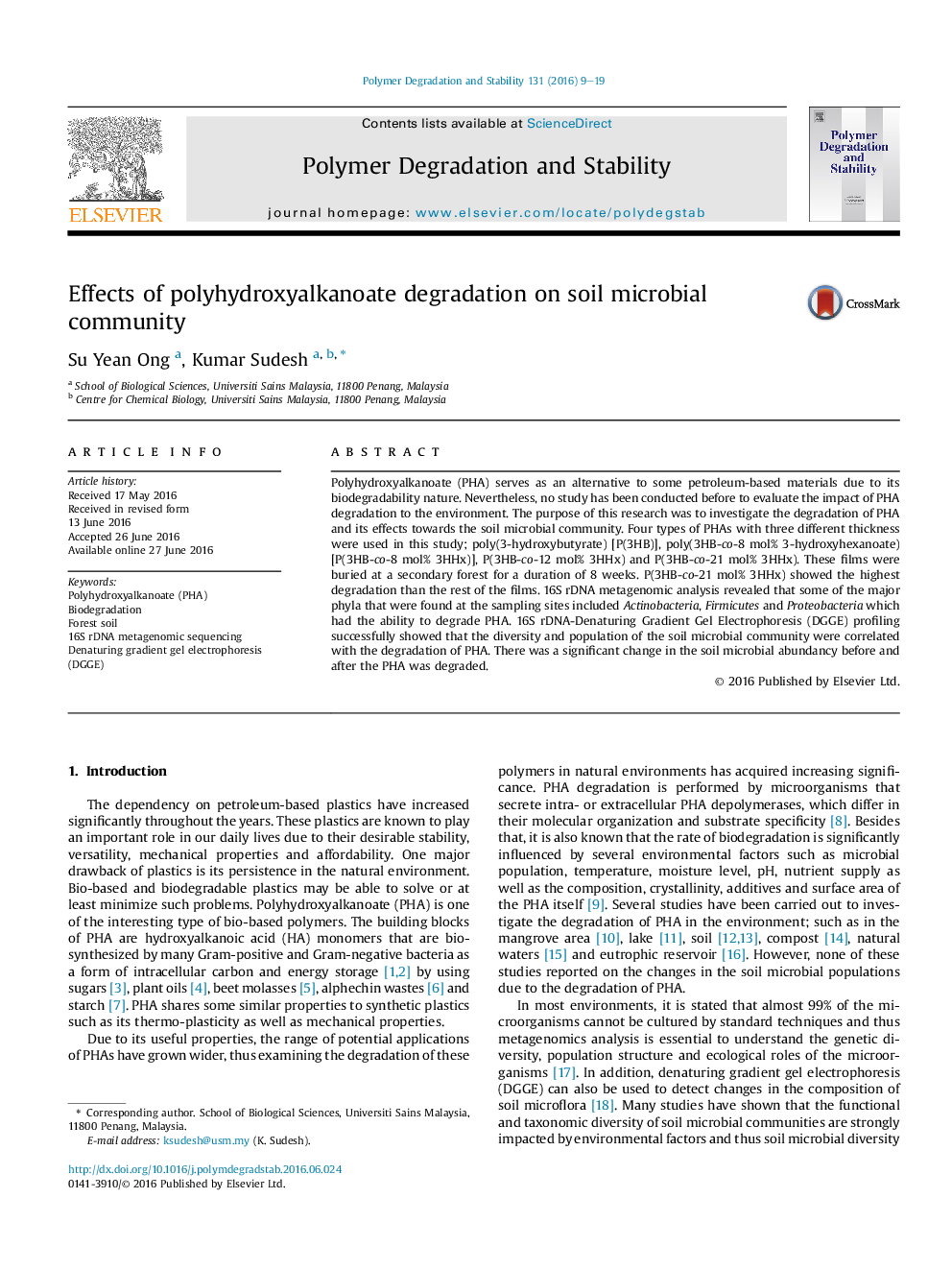| Article ID | Journal | Published Year | Pages | File Type |
|---|---|---|---|---|
| 5201038 | Polymer Degradation and Stability | 2016 | 11 Pages |
Abstract
Polyhydroxyalkanoate (PHA) serves as an alternative to some petroleum-based materials due to its biodegradability nature. Nevertheless, no study has been conducted before to evaluate the impact of PHA degradation to the environment. The purpose of this research was to investigate the degradation of PHA and its effects towards the soil microbial community. Four types of PHAs with three different thickness were used in this study; poly(3-hydroxybutyrate) [P(3HB)], poly(3HB-co-8 mol% 3-hydroxyhexanoate) [P(3HB-co-8 mol% 3HHx)], P(3HB-co-12Â mol% 3HHx) and P(3HB-co-21 mol% 3HHx). These films were buried at a secondary forest for a duration of 8 weeks. P(3HB-co-21 mol% 3HHx) showed the highest degradation than the rest of the films. 16S rDNA metagenomic analysis revealed that some of the major phyla that were found at the sampling sites included Actinobacteria, Firmicutes and Proteobacteria which had the ability to degrade PHA. 16S rDNA-Denaturing Gradient Gel Electrophoresis (DGGE) profiling successfully showed that the diversity and population of the soil microbial community were correlated with the degradation of PHA. There was a significant change in the soil microbial abundancy before and after the PHA was degraded.
Keywords
Related Topics
Physical Sciences and Engineering
Chemistry
Organic Chemistry
Authors
Su Yean Ong, Kumar Sudesh,
